Chopping herbs, such as cilantro, basil, or thyme, can be fun, especially if you do it correctly. We've put together a guide that lays out the tools you need and the best ways to chop herbs.
TOOLS NEEDED
CHEF'S KNIFE
The first tool you'll need is a sharp chef's knife. Choose a high-quality knife with a solid blade that can handle different textures and give precise cuts, like our Kiritsuke Damascus Chef Knife
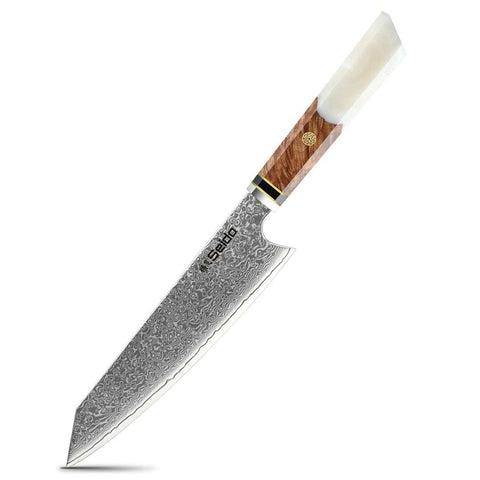
CUTTING BOARD
Next, you'll need a stable cutting board made from either plastic or wood, like our Gourmet Acacia, End Grain Cutting Board. Ensure that it is big enough so that you have enough room for chopping herbs.
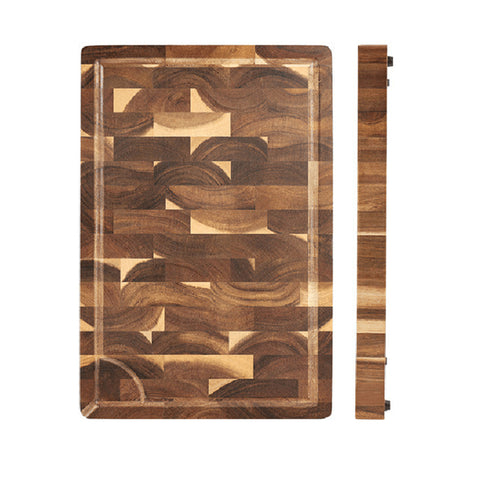
KITCHEN SCISSORS
Kitchen scissors can help you slice through your herbs quickly and efficiently. Our rustproof Seido Shears, Kitchen Scissors can help you make meticulous cuts on tiny leaves.
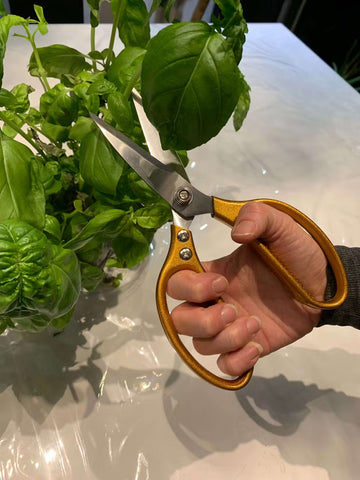
PAPER TOWELS
After rinsing your herbs, you'll want to pat them dry with paper towels to remove additional moisture. This will help you avoid having soggy herbs.
Elevate Your Culinary Skills: Master Herb Chopping with Seido Knives!
LEAFY HERBS VS. WOODY HERBS
Leafy herbs, like basil or cilantro, are tender, so handling them gently is necessary when cutting them. On larger leafy herbs, you can often leave the stem though herbs with stronger flavors may have more fibrous stems that you should remove. Woody herbs, like thyme, require different techniques to remove the leaves before cutting.
HOW TO CUT CILANTRO
STEP 1: RINSE AND DRY
Rinse the cilantro with cold water, shake off excess water, and then gently pat them dry with a paper towel.
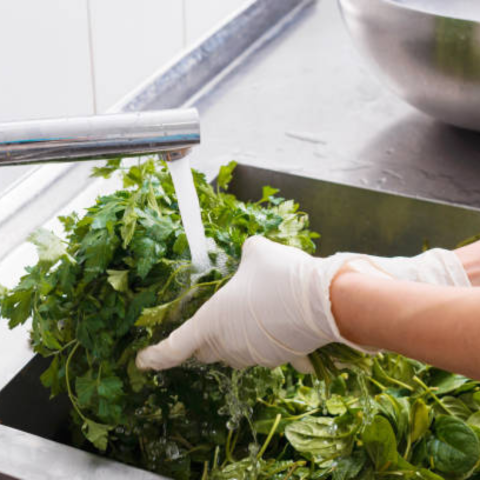
STEP 2: SEPARATE THE LEAVES
With your Seido chef's knife, if you'd like, cut the stems off just below the base of the leaves. Cilantro stems tend to be flavorful and not very fibrous, so they're well-suited to certain dishes.
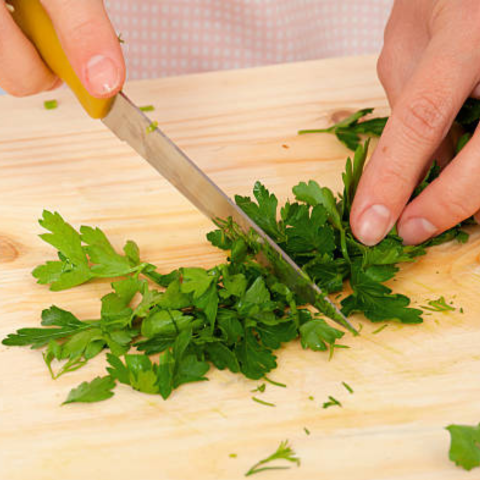
STEP 3: CHOP
Once you have the leaves prepped, chop them into fine pieces using a gentle back-and-forth motion.
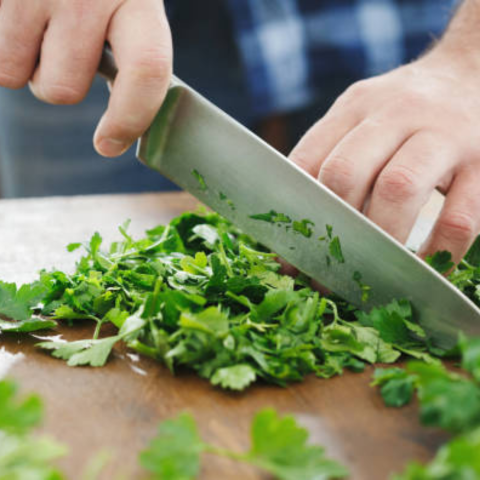
HOW TO CUT BASIL
STEP 1: RINSE AND DRY
Rinse the basil leaves in cold water and then pat them dry with paper towels to remove excess moisture.
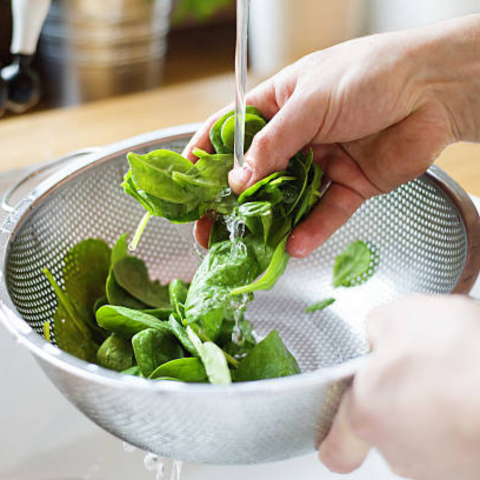
STEP 2: ARRANGE THEM
Next, arrange them on your cutting board so that they're in a neat pile, then roll them into a tight cylinder shape.

STEP 3: CUT
Using your chef's knife, slice the basil leaves across the roll. Make sure to cut gently and even

HOW TO CUT THYME
STEP 1: PLUCK
Before you chop thyme, you need to separate the sprigs from the main stem. You can also use your kitchen scissors to cut the sprigs off.

STEP 2: REMOVE THE LEAVES
Next, remove the leaves from the sprigs by running your fingers in the opposite direction of growth. This should get the leaves to detach.
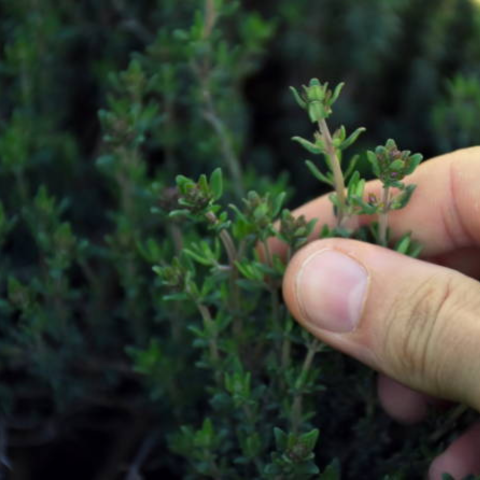
STEP 3: CHOP
Gather all your thyme leaves into a pile on your cutting board. With your chef's knife, chop the leaves into small bits.
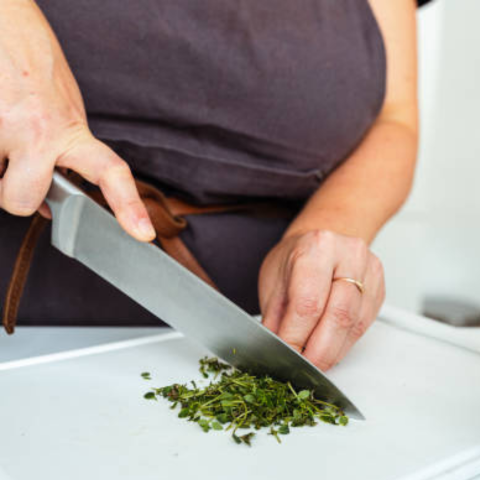
HOW TO STORE FRESH HERBS
There are a couple of ways to store fresh herbs. You can rinse them, pat them dry with paper towels, and then place them in a resealable plastic bag. Put the plastic bag in your fridge.
Another way to store fresh herbs is to place them in a jar with water and cover the jar loosely with a plastic bag—make sure to keep the stems on for this. Change the water every other day. This will keep your herbs fresher for longer.
TIPS AND TRICKS
Some important tips and tricks to remember when chopping herbs:
- Make sure your knife is sharp, as this will give you clean cuts.
- Never cut your herbs if they still have quite a bit of moisture on them. This can result in mushy herbs.
- After your first time slicing, turn the herbs 45 degrees and slice them again for a finer result.
CHOP HERBS LIKE A PROFESSIONAL CHEF
Once these techniques become second nature, chopping herbs will be easy. And if you enjoy cutting and chopping ingredients with our Seido knives, you can also learn how to trim herbs and more by reading our blog: 6 Classic Knife Skills You Need in the Kitchen



